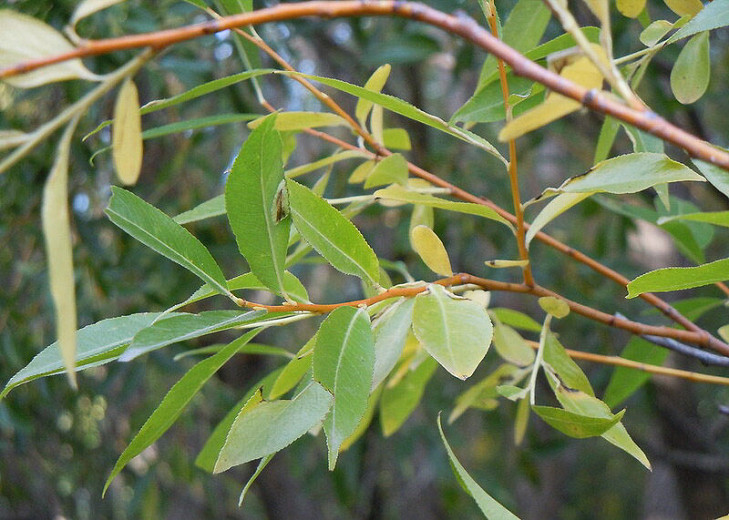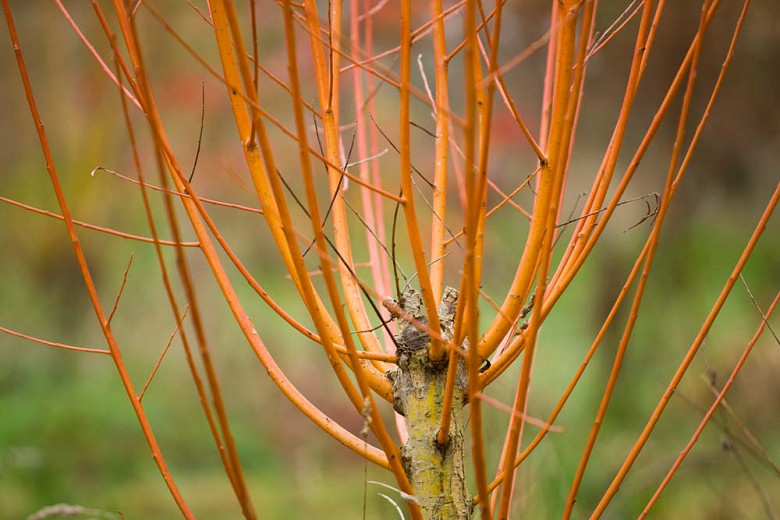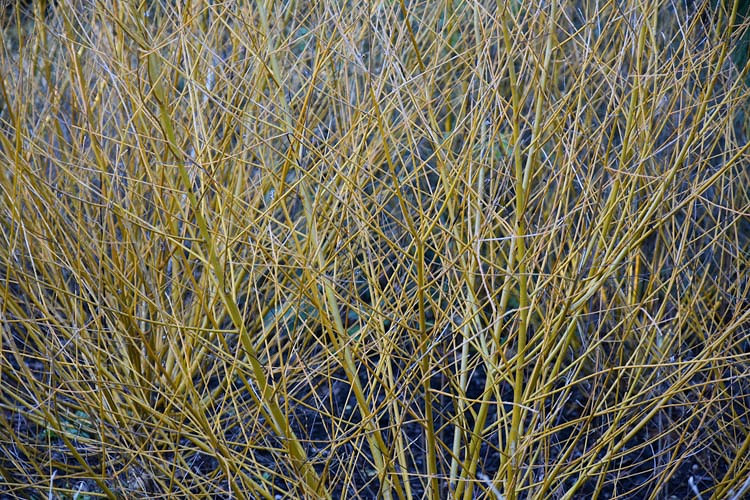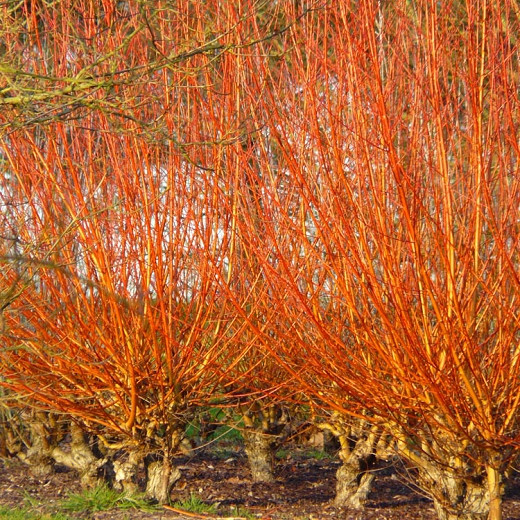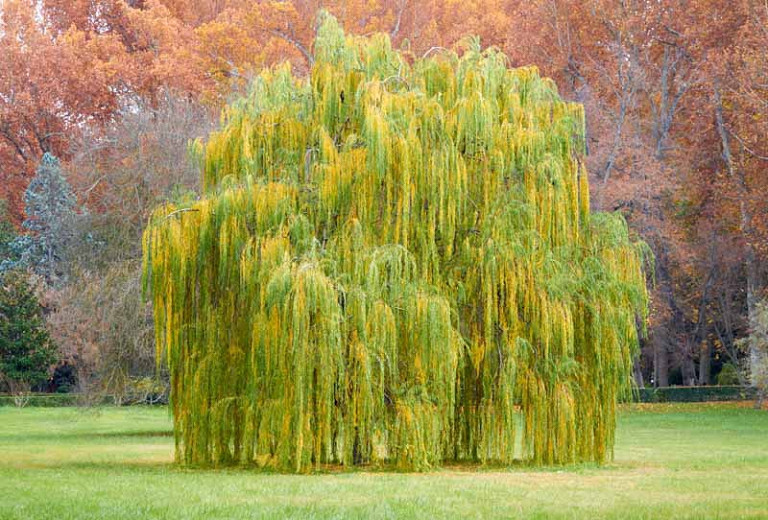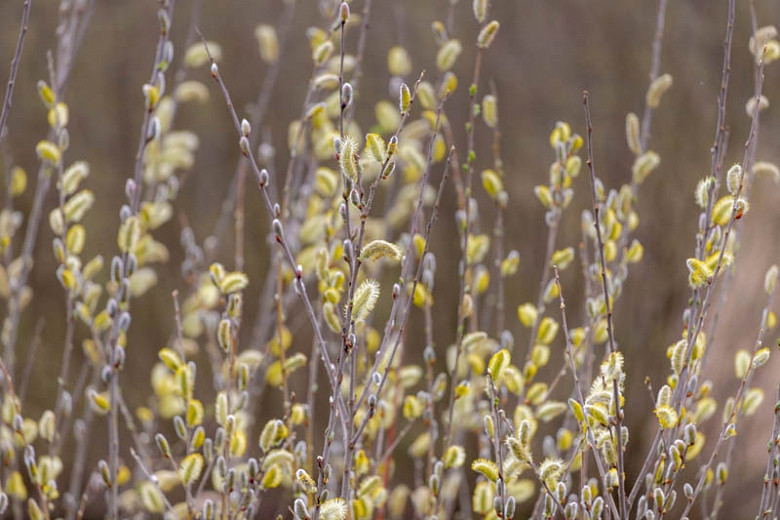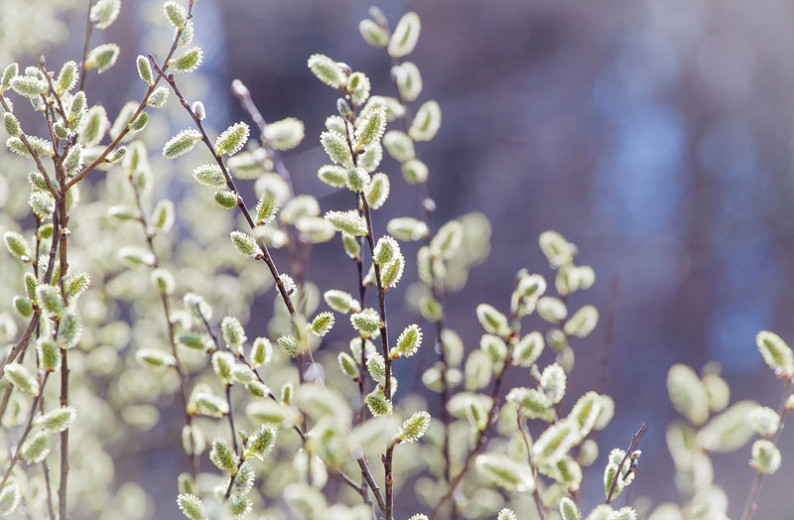Salix lasiandra (Shining Willow)
Salix lasiandra (Shining Willow) is an upright, multi-stemmed, large shrub or small deciduous tree with a broadly spreading, rounded crown. The shiny green leaves are lanceolate, 2-5 in. long (5-12 cm), finely toothed along the margins, and paler green below. They flutter in the breeze, creating a rippling bicolored effect. Shining Willow is dioecious with separate male and female plants. In mid to late spring, fuzzy catkins appear with or before the leaves. The pollen-releasing male catkins are yellow, while the seed-producing catkins are green. Seeds are tiny and embedded in a mass of tangled hairs that lifts and carries the seeds away on the air currents. Native to the western and southwestern United States, Shining Willow grows in wet to moist sites at middle to high elevations. Fast-growing, cold-hardy, Shining Willow can be used as a specimen, in group planting, near bodies of water, as an informal hedge, or as a deciduous screen. Its suckering habit aids in erosion control and makes it useful for stabilizing streambanks and improving wildlife habitat. The catkins are a source of pollen for beneficial insects and the catkins and buds are food for small game and songbirds in spring. Shining Willow is a host plant for the Mourning Cloak, Acadian Hairsteaks, Admirals. It is recommended for restoration projects and is easily propagated.
- Grows up to 10-30 ft. tall (3-9 m) and 10-25 ft. wide (3-8 m). Adds 36 in. per year (90 cm).
- Performs best in full sun to part shade, in moist to wet soils. Can withstand seasonal flooding.
- Good for hedges and screens, wildlife gardens, or along streams or ponds.
- Keep an eye out for anthracnose, willow blight, armillaria, phytophthora, aphids, beetle borers, caterpillars, spider mites, Verticillium.
- Shining willow is distributed from Alaska east to Labrador and south to California, Kansas, and North Carolina.
Requirements
| Hardiness | 2 – 9 |
|---|---|
| Climate Zones | 1, 1A, 1B, 2, 2A, 2B, 3, 3A, 3B, 4, 5, 6, 7, 8, 9, 14, 15, 16, 17, 22, 23, 24 |
| Plant Type | Shrubs, Trees |
| Plant Family | Salix – Willows |
| Exposure | Full Sun, Partial Sun |
| Season of Interest | Spring (Mid,Late)Summer (Early,Mid,Late)Fall |
| Height | 10' – 30' (3m – 9m) |
| Spread | 10' – 25' (3m – 7.5m) |
| Water Needs | Average, High |
| Maintenance | Low |
| Soil Type | Clay, Loam, Sand |
| Soil pH | Acid, Alkaline, Neutral |
| Soil Drainage | Moist but Well-Drained, Poorly Drained |
| Characteristics | Showy |
| Native Plants | United States, Alaska, California, Midwest, Illinois, Indiana, Iowa, Kansas, Michigan, Minnesota, North Dakota, Ohio, South Dakota, Wisconsin, Connecticut, Delaware, Maine, Massachusetts, Maryland, New Hampshire, New Jersey, New York, Pennsylvania, Rhode Island, Vermont, Pacific Northwest, Idaho, Oregon, Washington, Colorado, Montana, Utah, Wyoming, Southeast, Virginia, West Virginia, Southwest, Nevada, Arizona, New Mexico |
| Tolerance | Salt, Wet Soil |
| Attracts | Birds, Butterflies |
| Garden Uses | Hedges and Screens, Ponds and Streams |
| Garden Styles | Prairie and Meadow |
